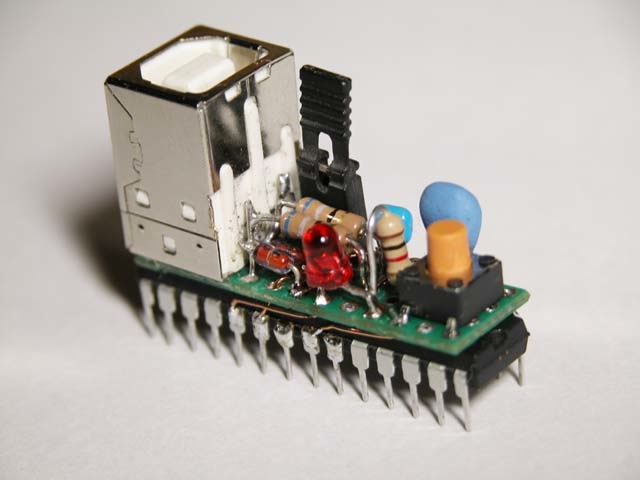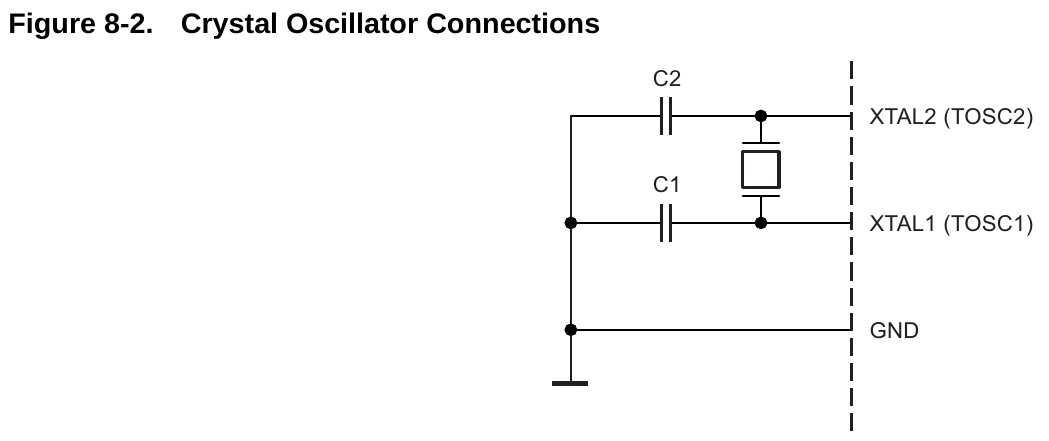Minimalist Arduino Log
Sep 2020 Build Camp
March 2020 STEAM Camp
From Japan in 2009
- Variation on dead-bug soldering from [1] to make a functional Arduino:
Assessment
For this to be functional:
 We need a source of clean 5V power such as a computer or USB power supply (USB B). This is easy.
We need a source of clean 5V power such as a computer or USB power supply (USB B). This is easy. We need to connect to specific pins. Yes, this is doable simply by using female Dupont wire directly connected to the pins of the chip.
We need to connect to specific pins. Yes, this is doable simply by using female Dupont wire directly connected to the pins of the chip. For this to be programmed, we need a USB to serial interface, which this doesn't appear to include. However, we can program this chip by inserting into another Arduino Uno.
For this to be programmed, we need a USB to serial interface, which this doesn't appear to include. However, we can program this chip by inserting into another Arduino Uno.
Thus, this would completely work to control things when powered up, such as a minimalist CEB Press. This could be a great apocalyptic option if one had components but no circuit boards/proto boards of any type to solder/plug onto.
VCC (pin 7/(20))
- At 16MHz the operating voltage is 3.78..5.5V. [2]
RESET (pin 1)
- RESET can be left unconnected ("floating") because it has a (weak) internal pull-up resistor.
- AN2519: "The Reset line has an internal pull-up resistor. If the environment is noisy, it can be insufficient and Reset may occur sporadically." [3]
- RESET can be directly connected to +5V to have a defined voltage potential. The datasheet says: "Connecting unused pins directly to VCC or GND is not recommended, since this may cause excessive currents if the pin is accidentally configured as an output". However, in normal usage RESET is never reconfigured as a digital port (in fact, this can be only done by blowing the RSTDISBL fuse and not undone - nobody sane would do it!?), so directly connecting RESET to +5V seems acceptable.
- According to the datasheet: If +5V is connected, then there is a reset current of approx. 0A. If 0V (GND) is connected, it is approx. 100uA.
Further Simplification
More simple option for a functional Arduino appears to be:
- USB B port - to plug into ubiquitous USB ports using a USB A to USB B male-male cable
- Atmega 328P chip
- 2 wires from USB port to power up the chip.
- Crystal oscillator on pins 9 and 10, with 22 pf capacitors to pins 9 and 10
That's it! To connect to outputs or inputs - use Dupont wire.
Furthest Simplification
For the radicals in the house, here is the absolute absolute minimum
- Atmega 328P chip
- Oscillator mechanism - crystal oscillator on pins 9 and 10, with 22 pf capacitors to pins 9 and 10
That's it! Power is supplied via a reliable power source to the +5 and ground via Dupont wires, and crystal is soldered directly to pins 9 and 10. Capacitors are soldered between 9 and 10 and ground.
Reset is accomplished by unplugging power. Programming is accomplished by plugging into an off-the-shelf Arduino Uno.
Oscillator Schematic
From the ATmega328 datasheet. (XTAL1 is pin 9, XTAL2 is pin 10.)
Sourcing
- USA - Breadboard Arduino kits exist - crystal, chip, caps, resistors, and reset button - [4]
- Ali - [5]
- Adafruit 2215 - [6]
- 1x 16MHz crystal (30PPM tolerance)
- 2x 20 pF capacitor

